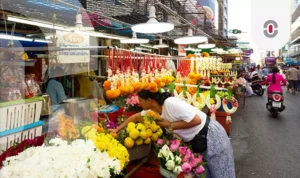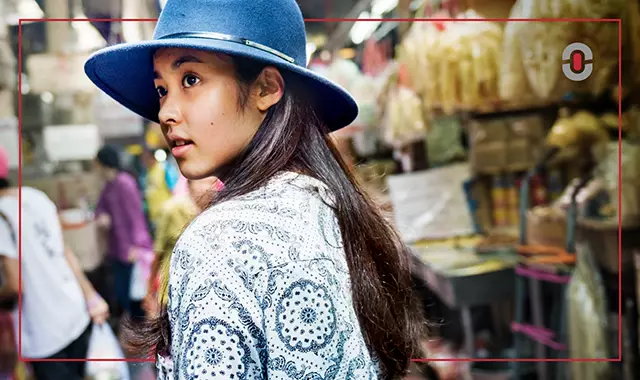AI Overview
| Category | Summary |
| Topic | Cultural localization insights for marketing success in Vietnam |
| Purpose | To guide brands on how to adapt their messaging, tone, design, and communication for the Vietnamese market beyond simple translation |
| Key Insight | Vietnamese consumers prioritize cultural respect, social proof, and community-oriented messaging—missteps in tone, visuals, or language can damage trust |
| Best Use Case | Global brands expanding into Vietnam or localizing content for Southeast Asian audiences |
| Risk Warning | Over-reliance on direct translation or Western-style communication can lead to public backlash or brand damage |
| Pro Tip | Collaborate with native linguists, cultural consultants, and local partners for language, tone, and visual validation |
Vietnam has emerged as one of Southeast Asia’s fastest-growing markets, fueled by a rising middle class, tech-savvy consumers, and a dynamic economy. But as global brands eye expansion in this vibrant country, one truth becomes clear: success here demands far more than word-for-word translation—it requires deep cultural understanding.
Marketing to Vietnam means navigating a rich tapestry of language, traditions, and social norms that influence how brands are perceived and trusted. A campaign that resonates in one country can fall flat—or even backfire—if it clashes with local values or misses key cultural cues. In this article, we’ll explore the cultural nuances that shape Vietnamese consumer behavior. We’ll also share real-world examples and practical tips to help your brand make a positive impact, avoid common mistakes, and build lasting connections in Vietnam.
Understanding Vietnamese Consumer Behavior
At the heart of Vietnamese society lies collectivism. Family values and community ties shape everything from purchasing decisions to brand loyalty. In Vietnam, family is a top priority, and respect for elders and social hierarchy permeates daily life. Brands that position themselves as family-friendly or community-oriented tend to find more success.
Trust and reputation are also crucial. Vietnamese consumers rely heavily on social proof: recommendations from friends and family, online reviews, and the reputation of a brand in the local market. A flashy ad campaign can generate awareness, but without trust, it rarely leads to conversions.
Shopping behaviors further reflect these cultural dynamics. Vietnam’s internet penetration is high, and smartphones dominate daily life—meaning most consumers research and shop online. However, price sensitivity can vary across segments, with younger urban consumers more willing to pay for quality and older or rural segments focusing on value.
Tip: Instead of one-off campaigns, invest in building credibility over time. Vietnamese consumers want to see consistent value and reliability over time. Invest in authentic engagement, customer service, and transparent practices that demonstrate your commitment to the local market.
Tone, Etiquette, and Formality
Vietnamese communication styles differ significantly from those in Western cultures. Western-style boldness may come off as arrogant. In Vietnam, politeness and indirectness are valued, particularly in formal or B2B contexts. Openly challenging or contradicting someone in public is generally avoided, and a diplomatic tone is preferred. This cultural tendency means that direct or overly bold marketing copy can come across as abrasive or disrespectful.
Honorifics and formality play a critical role in Vietnamese language and communication. Vietnamese has multiple levels of formality, and using the wrong one can make your brand appear rude or out-of-touch. For instance, when addressing older consumers or business professionals, you should use formal pronouns and titles to show respect. While younger audiences in urban areas may be more comfortable with a slightly casual tone online, excessive informality can still feel inappropriate or unprofessional.
Tip: Tailor your tone to the audience’s age, region, and setting. For older or more traditional audiences, maintain a respectful, formal tone in your messaging. For younger, digitally savvy consumers, a lighter, conversational tone can work—just be sure it still conveys genuine respect and cultural sensitivity.
Language and Translation Challenges
One of the most critical aspects of marketing to Vietnam is getting the language right. Vietnamese is written in Quốc Ngữ, a Latin-based script that uses tone marks to distinguish between different meanings. These diacritics are not optional: changing a single accent mark can transform a word entirely. For example, “ma” (ghost), “mạ” (rice seedling), “má” (mother), and “mà” (but) differ only by tone, yet have completely different meanings.
Machine translation tools, while helpful for basic understanding, often fail to capture these subtleties. They can overlook cultural context, regional expressions, and the nuances of honorifics and formality. Worse, automated translations can introduce embarrassing or even offensive errors if diacritics are mishandled or idioms are mistranslated.
Tip: Don’t rely solely on machine translation. Always involve native-speaking linguists and cultural experts in your QA process. They can ensure that your Vietnamese brand voice is not just technically correct but also culturally appropriate and engaging for its audiences.
Design and Visual Sensitivity
Visual elements are another key aspect of effective marketing in Vietnam. Color, imagery, and layout all have cultural associations that can influence how your brand is perceived.

- Red is a color of luck, happiness, and prosperity in Vietnam—ideal for promotions, festive campaigns, or celebratory messages.
- Black, on the other hand, can be associated with mourning and bad luck, so it’s wise to use it sparingly.
- Animal symbols and religious imagery carry specific meanings and should be used carefully. For example: a beverage company ran a Lunar New Year ad using an image of a dragon—appropriate for Chinese audiences but not for Vietnamese, where the lunar zodiac animal was actually a cat that year. The ad drew criticism for being tone-deaf and culturally insensitive.
Beyond color and symbolism, the overall aesthetic of your campaign should feel locally relevant. Images of Vietnamese landscapes, traditional attire, or family gatherings can create an immediate sense of connection. Meanwhile, campaigns that rely heavily on Western imagery may seem out-of-place or disconnected from local culture.
Tip: Test your visuals with local focus groups or advisors. They can provide valuable feedback on color choices, symbols, and design elements to ensure your campaign feels familiar and trustworthy.
Common Marketing Missteps in Vietnam
Even global brands can stumble when entering the Vietnamese market without a deep understanding of its cultural nuances. One well-known example is a major clothing brand that launched a “sale” campaign using a Vietnamese translation that actually read as “liquidation”—a term that suggested the company was going out of business, not offering a discount.
In another case, a popular global fast-food chain launched an advertising campaign about Vietnamese burger featuring people who eat it with giant red chopsticks. A lot of the local people found this culturally insensitive—mocking both Vietnamese cuisine and Asian dining practices. The ad, however, was removed within days.
Lesson: In Vietnam, where social proof is so important, small translation or design errors can go viral in the wrong way, damaging brand reputation and trust.
Building Trust with Vietnamese Audiences
Ultimately, success in Vietnam comes down to one thing: trust. Vietnamese consumers value brands that show respect for their culture and demonstrate genuine care for the community. This means going beyond traditional advertising to actively engage with local audiences in ways that feel authentic and personal.
Local partnerships also build credibility. Collaborating with Vietnamese influencers or co-branding with local businesses signals that you respect and understand the market. Beyond marketing campaigns, investing in responsive customer service—in local language, with a culturally appropriate tone—can turn one-time buyers into loyal customers.
Tip: Think beyond digital ads. Community engagement and genuine local partnerships go much further in Vietnam.
Conclusion
Vietnam is a dynamic, youthful market full of potential—but it’s also deeply rooted in tradition and cultural pride. Marketing to Vietnam requires more than translation. It demands empathy, adaptability, and a keen eye for the small cultural details that shape consumer trust and loyalty.
By respecting Vietnamese communication styles, involving local linguists and designers, and prioritizing authentic community connections, brands can not only avoid costly mistakes but also unlock rich, long-term opportunities.
For brands seeking to make a real impact in marketing to Vietnam, working with experienced localization partners is essential. At 1-StopAsia, we understand the importance of cultural nuance in localization—and we’re here to help you navigate it. Let’s make sure your brand’s voice is heard, respected, and trusted in Vietnam.
